This article was co-authored by Jonathan Frank, MD. Dr. Jonathan Frank is an Orthopedic Surgeon based in Beverly Hills, California, specializing in sports medicine and joint preservation. Dr. Frank's practice focuses on minimally invasive, arthroscopic surgery of the knee, shoulder, hip, and elbow. Dr. Frank holds an MD from the University of California, Los Angeles School of Medicine. He completed an orthopedic residency at Rush University Medical Center in Chicago and a fellowship in Orthopedic Sports Medicine and Hip Preservation at the Steadman Clinic in Vail, Colorado. He is a staff team physician for the US Ski and Snowboard Team. Dr. Frank is currently a scientific reviewer for top peer-reviewed scientific journals, and his research has been presented at regional, national, and international orthopedic conferences, winning several awards including the prestigious Mark Coventry and William A Grana awards.
There are 14 references cited in this article, which can be found at the bottom of the page.
wikiHow marks an article as reader-approved once it receives enough positive feedback. In this case, 100% of readers who voted found the article helpful, earning it our reader-approved status.
This article has been viewed 168,573 times.
A break or crack in a bone is called a fracture. This can occur after a significant amount of force is applied to the bone from something as minor as a fall from a swing set or tripping over a step to a serious car accident. Fractures need to be evaluated and treated by a medical professional to reduce the potential side effects from the break and improve the likelihood that the bone and joints will be restored to full function.[1] Although fractures are common in children as well as older adults with osteoporosis, an about seven million people of all ages break a bone each year.[2]
Steps
Evaluating the Immediate Situation
-
1Find out what happened. If you're assisting yourself or someone else, figure out what happened directly before the pain. If you're helping someone, ask what happened right before the incident. Most broken bones require a force strong enough to crack or fully break the bone. Figuring out the cause of the injury can help you assess whether it's likely or not likely that a bone was broken.[3]
- A force strong enough to cause a bone to break can occur while tripping and falling, during a motor vehicle accident or as a result from a direct blow to the area, such as during a sporting event.
- Broken bones can also be the result of violence (such as abuse) or repetitive stress, such as running.
-
2Determine whether you need to get additional services involved. Knowing what caused the injury can not only help you assess whether it resulted in broken bone but also whether you need to get assistance. You may need to contact emergency services, the police in the case of a car accident or child services in the case of child abuse.
- If the injury does not appear to be a broken bone (it may, for instance, be a sprain, which occurs when ligaments are overextended or even torn), but the individual nevertheless expresses that he is in significant pain, you should call emergency services (911) or offer to escort him to a nearby clinic or hospital if his injury and/or pain is not urgent (e.g., the injury is not bleeding profusely, the victim can still talk and form complete sentences, etc.)
- If the person is unconscious or cannot communicate with you, or if the person is communicating but incoherent, you should call emergency services as this may be an indication of a head injury. See Part Two below.
Advertisement -
3Inquire about what was felt or heard during the injury. Recall if you're the injured party or ask the injured person what was felt or experienced at the time of the fall. People who suffer from a broken bone will often describe hearing or “feeling” a snap in the area. Thus, if the person mentions that she heard a snap, this is usually a good indication that something has been broken.[4]
- The person may also describe a grating feeling or sound (like pieces of bone rubbing up against one another) when the area is moved, even if the individual doesn't immediately experience pain. This is called crepitus.[5]
-
4Inquire about pain. When a bone breaks, the body responds immediately with the feeling of pain. Both the break itself and any injuries to the body tissue near the site of the break (such as the muscles, ligaments, nerves, blood vessels, cartilage, and tendons), can cause pain. There are three levels of pain to be on the lookout for:
- Acute pain — This is a heightened and intense feeling of pain that usually occurs right after the bone has broken. If you or another person expresses extreme pain, this could be a sign of a broken bone.
- Sub-acute pain —This type of pain occurs in the first few weeks after a break, particularly as the fracture heals. This pain primarily occurs because of the stiffness and muscle weakness that are effects of the lack of movement required to heal the broken bone (e.g., in a cast or sling).
- Chronic pain — This is a feeling of pain that continues even after the bone and its tissues have healed and can occur several weeks or months after the initial break
- Note that it's possible to experience some or all of these types of pain. Some people feel acute and sub-acute pain but not chronic pain. Other people may experience a fracture without any or minimal pain, like the baby toe or the spine.
-
5Look for outward signs of a broken bone. There are a number of signs that may indicate the presence of a broken bone, including:[6] [7]
- Deformity in the area and movement in an unnatural direction
- Hematoma, internal bleeding, or severe bruising
- Difficulty moving the area
- The area looks shorter, twisted or bent
- Loss of strength in the area
- Loss of normal function of the area
- Shock
- Severe swelling
- Numbness or tingling in the area or below the area of the suspected break
-
6Look for other symptoms of a broken bone if there are no visible signs. In the case of a small fracture, there may be no visible deformity to the area and only minimal swelling that might not be noticeable to your eye. So you will have to do a more detailed assessment to see if there is a broken bone.[8]
- Often broken bones will cause people to modify their behavior. For example, people will often avoid putting weight or pressure on that area. This is one indication that something is not right, even if you can't see any broken bone with the naked eye.
- Consider the following three examples: a broken bone in the ankle or leg will often create enough pain that a person will not want bear weight on that leg; a broken bone in the arm or hand will create enough pain that a person will want to protect the area and not use the arm; pain from broken ribs will keep people from taking deep breaths.
-
7Look for point tenderness. Broken bones can often be identified by point tenderness, meaning that the area of the bone is extremely painful in one specific spot when that region on the body is pressed, as opposed to pain over a generalized area. In other words, the feeling of pain spikes whenever pressure comes close to the broken bone. There is a higher likelihood that the bone has been broken when point tenderness is present.[9]
- Generalized pain with palpation (gentle pressure or prodding) over an area larger than three fingers width is more likely to be from ligament, tendon or other tissue damage from the injury.
- Note that immediate bruising and large amount of swelling more likely indicates tissue damage and not a broken bone.
-
8Be careful dealing with children with suspected broken bones. Keep the following factors in mind if you are faced with determining whether a child under the age of 12 has broken a bone. Overall, it's usually best to take your child to the doctor to receive a formal diagnosis if you suspect a broken bone, as a broken bone can affect the growth of the child's bones. This way your child can also receive immediate and appropriate treatment.
- Younger children cannot usually identify pinpoint pain or point tenderness well. They have a more generalized neurological response to pain than adults.
- It is difficult for children to rate how much pain they are feeling.
- The pain of a fracture for children is also much different because of their bones' flexibility. Children's bones are more likely to bend or partially snap than break.
- You know your child best; if their behavior suggests that they are in more pain than you expect from the injury then seek medical attention for the injury.
Providing Immediate Care
-
1Don’t move an injured person as a general rule. Only move someone if there is imminent danger when a bone is broken during a serious fall or from a car accident. Do not try to realign the bones or move the injured person if he is unable to move on his own. This will avoid further injury to the area.[10]
- Do not move anyone with a pelvic or hip fracture; pelvic fractures can cause massive internal bleeding into the pelvic cavity. Instead, call emergency services right away and wait for medical support. However, if a person with this kind of injury absolutely must be transported without emergency medical attention, then place a roll or pillow between the person's legs and secure the legs together. Roll the person onto a board for stabilization by rolling them as one piece. Keep the shoulders, hips and feet lined up and roll them all together while someone slides a board under her hips. The board must reach from the middle of the back to the knees.[11]
- Do not move a person with a potential broken back, neck or head. Immobilize her in the position in which you find her and call for emergency help immediately. Do not try to straighten her back or neck. Tell emergency personnel you suspect a broken head, back or neck and why. Moving the person could cause severe long-term damage, including paralysis.
-
2Control any bleeding from an accident or injury. Care for all wounds before dealing with a broken bone.[12] If a bone is protruding from the skin, do not touch it or try to place it inside the body. The color of bone is usually gray or light beige, not the white bone you see on Halloween and medical skeletons.
- If there is severe bleeding, always take care of the bleeding before dealing with the broken bone.
-
3Immobilize the area. Only provide care to the broken bone if emergency medical treatment is not expected immediately. If emergency personnel are expected immediately or you are en route to a hospital, splinting the area can do more harm than good. However, if treatment in a medical facility is not immediately available, you can help to stabilize the bone and relieve the pain using these guidelines.
- Splint a broken arm or leg to give it support. Do not try to realign the bone.[13] To make a splint you can use material you have on hand or can find nearby. Look for rigid material to make the splint, such as a board, stick, rolled up newspaper, and so on. If the body part is small enough (like a small toe or finger) it can be taped to the toe or finger next to it to provide stability and splinting.[14]
- Pad the splint with clothing, towels, blankets, pillows or anything else that is soft at hand.
- Extend the padded splint to beyond the joint above and below the break. For instance, if the lower leg is broken, the splint should go above the knee and lower than the ankle.[15] Similarly, breaks on joints should be splinted to both of the bones adjacent to the joint.
- Secure the splint to the area. You can use a belt, rope, shoelaces, anything that is handy that will keep the splint in place. Be careful when you apply the splint not to cause further injury to the body. Pad the splint well so it doesn’t add pressure to the injured area but only immobilizes it.[16]
-
4Make a sling if the broken bone is arm or hand. This helps support the arm and avoid fatiguing the muscles. Use a piece of cloth that is approximately 40 inches square cut from a pillowcase, bedsheets or any other larger material. Fold it into a triangular piece. Place one end of the sling under the injured arm and over the shoulder while taking the other end over the other shoulder and cradling the arm. Tie the ends behind the neck.[17]
Obtaining Medical Care
-
1Call 911 immediately if the break requires emergency care. If you notice any of the following, emergency medical treatment is required. If you cannot call yourself, then send another person to call 911.[18]
- The suspected broken bone is part of another major trauma or injury.
- The person is unresponsive. In other words, if the person is not moving or talking. If the person is not breathing, you should administer CPR.
- The person is breathing heavily.
- The limb or the joint appears to be deformed or bent at an odd angle.
- The area where the bone is broken is numb or bluish at the tip.
- The suspected broken bone is located in the pelvis, hip, neck, head or back.
- There is heavy bleeding.
-
2Take precautions to prevent shock. Broken bones experienced during a significant accident can trigger shock.[19] Until emergency personnel arrive or until you make it to a medical center, lay the person down flat, feet elevated above the level of his heart and his head lower than his chest if possible. If a break is suspected in a leg, do not elevate that leg. Cover the person with a coat or blanket.[20]
- Remember, do not move anyone at all if you suspect that the person's head, back or neck is broken.
- Make the person comfortable and keep him warm. Pad the affected area with blankets, pillows or clothing to pad the area. Talk to the person to help distract from the pain.[21]
-
3Apply ice to control the swelling. Open the clothing around a potential broken bone and apply ice to help control the swelling.[22] This will assist the doctor in setting the bone and help to control pain. Do not apply directly to the skin but wrap the ice pack or bag of ice in a towel or other material.[23]
- You could also use something from your freeze that you have on hand, such as a bag of frozen vegetables or fruit.
-
4Always follow up with a physician. You should make an appointment with your doctor or visit a medical clinic to get an X-ray if you notice symptoms later on that did not appear at the time of injury.[24] Do this if you or the affected person experience pain in the injured area without noticeable improvement over several days or if you or the affected individual did not initially experience point tenderness over the injured area in the first few hours but develop it in the next day or two. Sometimes tissue swelling can inhibit the perception of pain and point tenderness.
- Though this article is intended to help you determine if you have broken a bone with an X-ray, it is strongly advised you visit a doctor as soon as possible if you have any suspicion that you broke something in a fall or other accident. If you walk around with a broken limb or other body part either knowingly or unknowingly for too long, it could lead to long term injury in the area.
References
- ↑ Jonathan Frank, MD. Sports Orthopedic Surgeon & Joint Preservation Specialist. Expert Interview. 31 July 2020.
- ↑ http://orthopedics.about.com/cs/otherfractures/a/fracture.htm
- ↑ http://www.nlm.nih.gov/medlineplus/ency/article/000001.htm
- ↑ https://www.sja.org.uk/get-advice/first-aid-advice/bones-and-muscle-injuries/broken-bones-and-fractures/
- ↑ https://www.sja.org.uk/get-advice/first-aid-advice/bones-and-muscle-injuries/broken-bones-and-fractures/
- ↑ http://www.stjohn.org.nz/first-aid/first-aid-library/fractures-and-dislocations/
- ↑ https://www.nhs.uk/common-health-questions/accidents-first-aid-and-treatments/how-do-i-know-if-i-have-broken-a-bone/
- ↑ http://www.merckmanuals.com/professional/injuries-poisoning/fractures-dislocations-and-sprains/overview-of-fractures-dislocations-and-sprains
- ↑ http://www.merckmanuals.com/professional/injuries-poisoning/fractures-dislocations-and-sprains/overview-of-fractures-dislocations-and-sprains
- ↑ https://www.news-medical.net/health/Broken-Bone-First-Aid.aspx
- ↑ http://www.health.harvard.edu/family_health_guide/emergencies-and-first-aid-how-to-splint-a-fracture
- ↑ https://www.news-medical.net/health/Broken-Bone-First-Aid.aspx
- ↑ http://www.mayoclinic.org/first-aid/first-aid-fractures/basics/art-20056641
- ↑ https://www.coloradowm.org/blog/splinting-review/
- ↑ http://www.nlm.nih.gov/medlineplus/ency/article/000040.htm
- ↑ http://www.nlm.nih.gov/medlineplus/ency/article/000040.htm
- ↑ http://www.health.harvard.edu/family_health_guide/emergencies-and-first-aid-how-to-make-a-sling
- ↑ http://www.mayoclinic.org/first-aid/first-aid-fractures/basics/art-20056641
- ↑ http://www.mayoclinic.org/first-aid/first-aid-fractures/basics/art-20056641
- ↑ http://www.stjohn.org.nz/first-aid/first-aid-library/fractures-and-dislocations/
- ↑ http://www.nlm.nih.gov/medlineplus/ency/article/000001.htm
- ↑ Jonathan Frank, MD. Sports Orthopedic Surgeon & Joint Preservation Specialist. Expert Interview. 31 July 2020.
- ↑ http://www.mayoclinic.org/first-aid/first-aid-fractures/basics/art-20056641
- ↑ Jonathan Frank, MD. Sports Orthopedic Surgeon & Joint Preservation Specialist. Expert Interview. 31 July 2020.
About This Article
To tell if a fall broke bones without an x-ray, look for physical signs that a bone is broken, like severe bruising and swelling or a deformity or unnatural bend in the area. However, even if you can't see outward signs, you might still have a broken bone, especially if you're unable to put weight or pressure on the area without experiencing significant pain. For example, if you can't put weight on one of your legs, it could be a sign that you broke a bone. Additionally, if one specific point on your bone is extremely painful as opposed to a general, all-around pain, it could be a sign that the bone is broken. For advice from our Medical co-author, like how to treat a broken bone, keep reading.



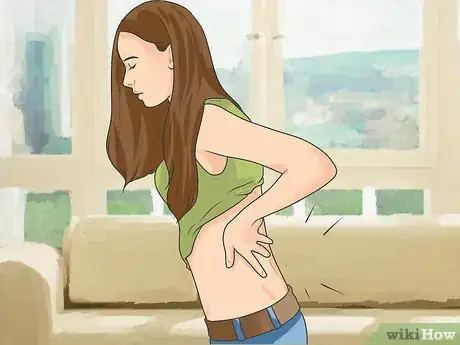

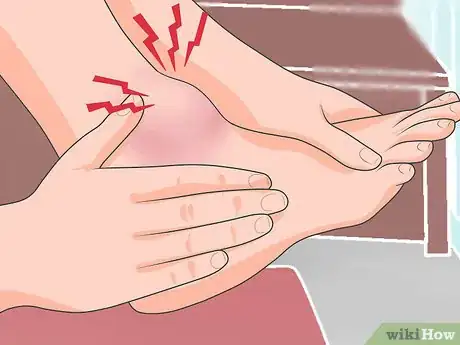
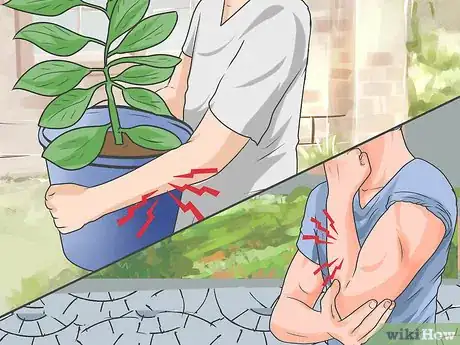

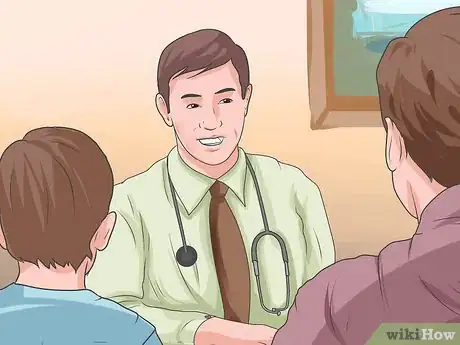


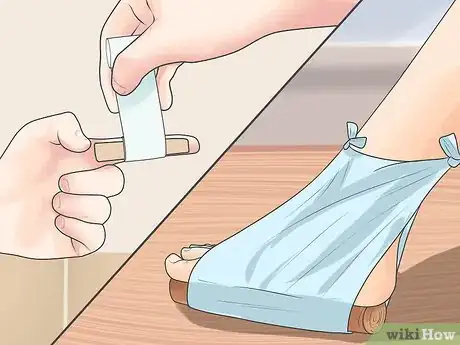


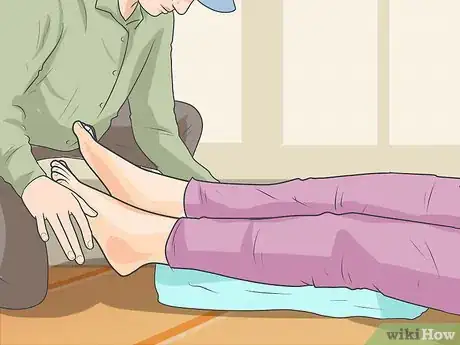
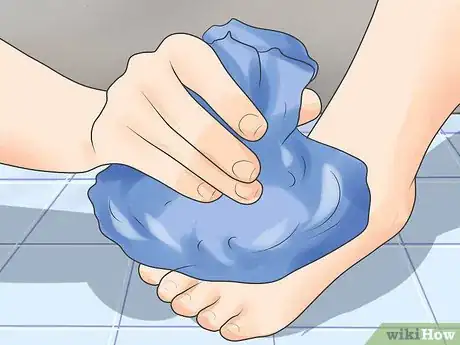

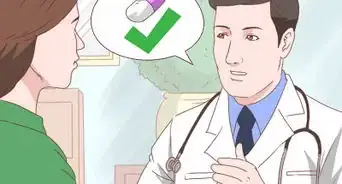

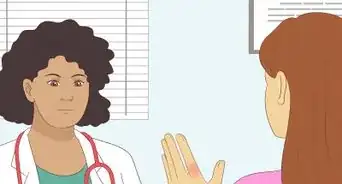

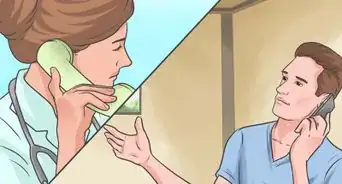
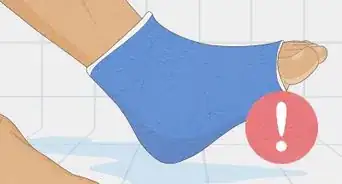

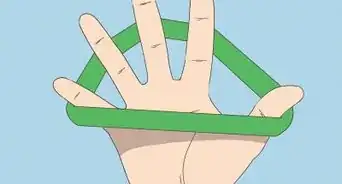

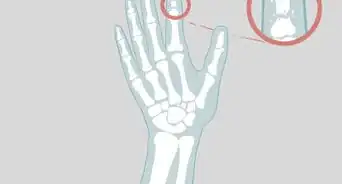

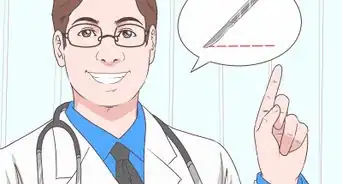











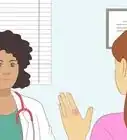




































Medical Disclaimer
The content of this article is not intended to be a substitute for professional medical advice, examination, diagnosis, or treatment. You should always contact your doctor or other qualified healthcare professional before starting, changing, or stopping any kind of health treatment.
Read More...